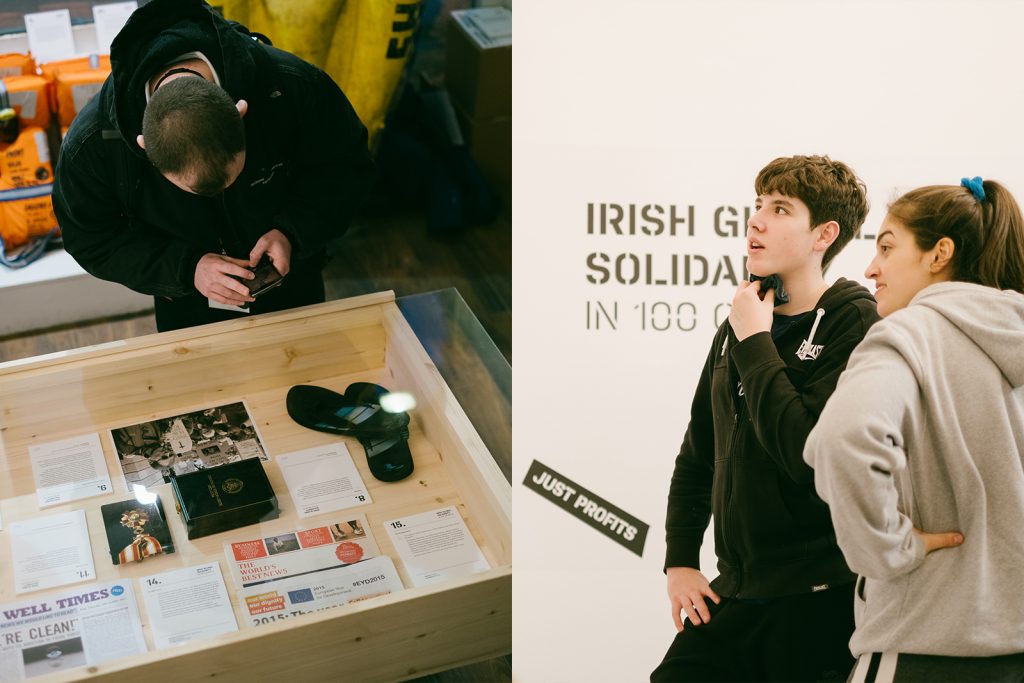Learning Outcomes
- Describe what Trade is.
- Recognise the need for trade.
- List food products traded globally and locally.
- Understand the concept of Food Miles.
- Differentiate between Trade and Fair Trade.
- Trace the origins of one of the following products: Food, Fashion or Oil.
- Interpret information from Global Maps.
- Research the Fair Trade mark and the availability of five Fair Trade products locally.
- Promote Fair Trade consumption products in your school (staff & students).
- Differentiate between Trade & Exploitation.
- Illustrate one case of human exploitation.
Key Skills
- Assess & interpret information from maps.
- Present information from your product search.
- Explore options for reducing the use of products with high Food Mileage.
- Analyse and explore issues related to Food Miles.
- Create a marketing strategy for Fair Trade products in your school.
- Empathise with victims of trade exploitation.
- Use I.T to access information on Fair Trade.
- Write a review and create a poster of the film “Black Gold”.
- Hold an informal debate on Fair Trade.
Resources
- 5:50:500: or how the world rewards the rich at the expense of the poor and how we fit in (2010) an DVD resource by 80:20 | sample pages | explanation of the concept 5:50:500 | activities to support using 5:50:500
- How the World Works 2 (2015) | popular teaching resource updated by the Debt and Development Coalition Ireland debtireland.org
- On developmenteducation.ie: Top 10 facts about the Fairtrade movement in Ireland by Tony Daly (March 20th, 2015) and more blogs; learning guide to ethical consumption (2015)
- The Business of Food: Who makes the Rules? | by Trocáire
- Proudly Made in Africa: a business studies and development education transition unit (2013) | by Value Added in Africa
- Ethical consumerism in European education toolkit (2014) | by Waterford One World Centre et. al
Activities:
Activity TF 1
Students discuss their understanding of trade and why we trade. Students list 5 food products traded globally and 5 food products traded locally. Students identify the origins of all the products in a typical shopping basket. Students are introduced to the concept of Food Miles and debate the advantages and disadvantages. Students reflect on their dependency on trade by reflecting on the food items eaten for breakfast and their origins.
Activity TF 2
Students explore the differences between Trade and Fair Trade using the Fairtrade Resource Network summary. Students watch a short video which attempts to clarify the differences between Trade and Fair Trade. Students watch a short video and discuss which attempts to clarify the differences between Trade and Fair Trade. To emphasise the difference between Trade and Fairtrade divide the class into groups and use the Banana Exercise from Self Help Africa “Food, Land and Trees”.
Activity TF 3
Students are encouraged to see the contradiction between the slick images promoted by sportswear brands and the harsh, unfair work conditions of workers in many countries who make the sportswear worn by athletes and many millions of ordinary people. See “Looking behind the Logo“. Students then write a similar version tracing the possible origins and global supply chain of oil or a food product.
Activity TF 4
Engage the class in the “Trading Game” to illustrate how trade can benefit or hinder the economic development of different countries or trading blocks. Working in Groups students analyse the information in the summary of the 5:50:500 resource. Following short discussion on the above summary, students look at the information in more detail in the following document. Students gain a deeper understanding of the Barriers to trade Pages 143-146 -80:20
Activity TF 5
Students Watch and review the film “Black Gold” and link to the issues raised in trading game and any issues raised in 5:50:500
Activity TF 6
Using the resource, How the World Works 2 – pages 35-37, students gain an understanding of Global Debt Crises. Students gain an understanding of events which led up to the debt crisis by using the resource How the World Works 2 – Pages 38-43. Students watch “Hole in the Bucket” EMBED a short video by Anthony Mingella.
Students are introduced to a discussion paper about Ireland and The EU’s role in supporting an unjust global tax system 2014.
Activity TF 6
Using stimulus sheets, students are encouraged to critically reflect, generate discussion, ideas and debate development issues.
Explore the online exhibition with 100 objects providing a snapshot of Irish engagement with global cultural, political and social issues over the past 50 years.

